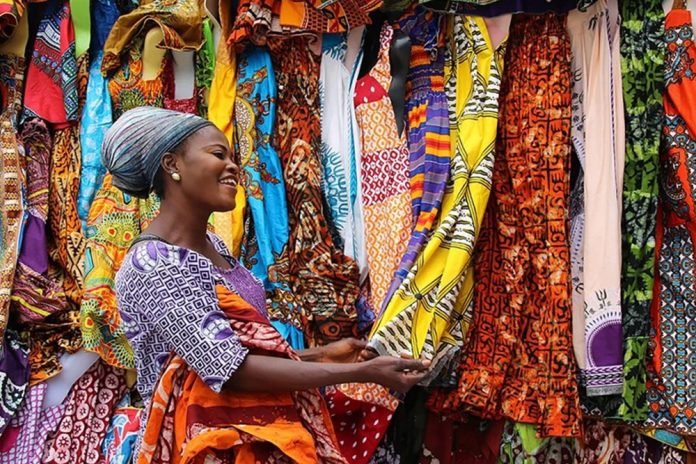Ghana’s shaky economy has forced many to shun the tradition of buying textiles on occasions like New Year. Since COVID, schools have resumed in December, meaning most people think of how their sons and daughters would go to school, say traders.
The ‘small’ brands Yeboah refers to are the much cheaper versions of African wax print that have flooded markets in Ghana and across Africa for years and are giving “original” manufacturers tough competition. Imported from China, the fabrics often carry designs imitating more established brands and sell for a third to a tenth of the price. Some are outright counterfeits, claiming in typo-ridden labels to be recognizable brands.
But although these Chinese-made fabrics get a bad rap, some say they are increasing of good quality, with their elaborate designs becoming chicer and their colors no longer fading after a wash.
Some people say the original is too costly, and traders sell Hitarget, a famous China-made brand seen as a high-quality, cheaper alternative to big names and that’s way ahead in the “smalls” range.
Known mainly as Ankara, the origins of the colorful fabric that has come to embody the essence of African-ness on the continent, and for diasporans looking to stay connected to their roots, it is not African itself. The material was born when Dutch tradesmen in the 1800s attempted to mechanically mass-produce the intricate, hand-made designs of Javanese batik prints native to the Dutch East Indies, now Indonesia. The designs, made with a wax-resist dyeing method that left equal color intensity on both sides of plain cotton spreads, didn’t catch on. But European printers soon found their invention was getting unexpected attention elsewhere – in Africa.
In West and Central Africa, the boldly colored cloth kickstarted a style revolution. People, especially women, wore the material everywhere – weddings, naming ceremonies, burials. Soon, the new fabric edged out indigenous materials like the earthy blue tye-dye Adire of the Yorubas in Nigeria and the flashy, hand-woven Kente of the Ashanti and Ewes of Ghana, which were heavier and not suitable for everyday wear like Ankara.
After 177 years, the brand has become the most famous wax printmaker on the continent, painting itself as the ‘original’ luxury brand amid a sea of fake and counterfeit China-made copies. Six yards of Vlisco costs as high as 220 cedis ($200), but imitations cost much less. That, though, Oosting said, could be to the brand’s advantage.
“We’ve been through so much over the years, we’ve seen coup d’etats, and actually, we have built some resilience,” Oosting said, adding that the pandemic and the Ebola outbreaks that wracked the DRC were among the brand’s most challenging times. “What we are not doing is starting to discount because our product DNA needs to be secured. Yes, the market is difficult, but we want to keep our quality because we are not here for the next six months but for the next decade, the next century.”
In those early days of the African wax print, entrepreneurial African women worked with European manufacturers like Vlisco to create beautiful new patterns that carried meaning and to which the women bought exclusive distribution rights.
In 1966, Ghana launched the Ghana Textiles Printing Company (GTP), with the government having a majority stake. Around the same time, Akosombo Textiles Limited (ATL), trendy for its Adinkra symbols borrowed from the Gyamans ethnic group, also came on the scene. In Nigeria, the United Nigerian Textile Mills (UNTL) partnered with the Cha Group in Hong Kong to open a mill in northern Kaduna state. In Ivory Coast, Uniwax was birthed – a partnership between the Ivorian government and Unilever, the British consumer goods manufacturer.
But a cocktail of issues, including government policies, counterfeits, a lack of infrastructure, and the unavailability of locally sourced cotton, forced many printers to shutter or sell out, costing hundreds of textile workers their jobs.
Some brands aim to localize production again but need help with similar issues.
Lome’s Wina Wax is designed locally but manufactured in China because of a lack of electricity; Marlene Adanlete-Djondo, the founder and a Nana Benz descendant, said producing in China is an attempt to adapt at all costs while offering reasonable prices.
Most cheap imports use cheaper grades of cotton for production and even mix the cotton with fabrics like polyester, whereas authentic loin clothes are wholly cotton. Where quality Ankara fabric is soft to the touch and yields under the heat of an iron, some smalls need more mouldability, making them a pain to sew into the elaborate styles customers demand.



